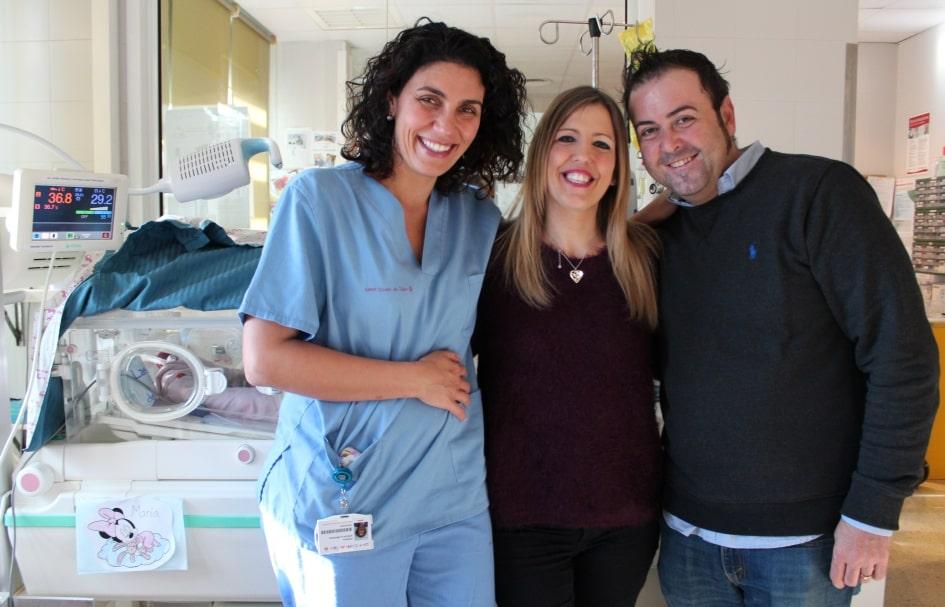The SJD Barcelona Children’s Hospital successfully operates on a baby girl weighing 1,310 grams suffering from incessant ventricular tachycardia

She is the smallest baby in the world to undergo a cardiac ablation
The medical team monitoring the mother during pregnancy detected, in the 20th week of gestation, that the fetus was suffering from incessant tachycardia, meaning that her heart was beating at up to 300 beats per minute, when the usual rate is 150. The cardiologists at the Hospital Universitario Miguel Servet, which was treating the case (the family lives in Zaragoza), initially attempted to counteract the tachycardia by administering several antiarrhythmic drugs to the regnant woman.
This treatment, which was received by the fetus in the mother’s womb, through the placenta, made it possible to extend the pregnancy and delay delivery until week 30 of pregnancy (at which point the baby was viable ), but did not allow the disease to be cured. The girl, who was born weighing 1,310 grams, continued to suffer from severe heart failure which did not respond to pharmacological treatments and was endangering her life.
Heart surgery in a heart measuring two centimetres
Ten days after the birth, the newborn girl was transferred to the SJD Barcelona Children’s Hospital to undergo a cardiac ablation to be performed by the team in the Arrhythmia Unit, led by the doctors, Josep Brugada and Georgia Sarquella This is a procedure that electrophysiologists use to destroy the electrical tissue of the heart responsible for the abnormal heart rhythm. The technique consists of introducing a catheter through the patient’s groin and directing it through the femoral vein to the heart, in order to, once there, apply radio frequency in the area causing the tachycardia.
The difficulty posed by this technique is very high, and requires great precision in the case of a premature baby, as the vein through which cardiologists have to introduce the catheter has a diameter of less than one millimetre, and the heart, where they have to perform the ablation, measures barely two centimetres. The Arrhythmia Unit at the SJD Barcelona Children’s Hospital is the only centre of excellence in Spain indicated by the Spanish Ministry of Health for the treatment of paediatric arrhythmias.
The intervention was successfully performed on 4 January, by a team of cardiology, neonatology, anaesthesiology and nursing professionals. The girl is the smallest baby in the world to have undergone a cardiac ablation.
Cutting-edge technology
The procedure was carried out in an operating theatre equipped with state-of-the-art technology that allows cardiac catheterisation to be performed on premature children and even fetuses suffering from congenital heart disease. In this theatre, funded by a grant from the Fundació Privada Daniel Bravo Andreu [Daniel Bravo Andreu Private Foundation], around 550 electrophysiological procedures are carried out every year, including cardiac ablations, the fitting of pacemakers, defibrillators, etc. One third of the patients treated are under one year old, and the success rate is 96%.



